Month: February 2012
Weekending 26022012
Over here in Geneva, the Laboratory was involved in the Lift 12 conference with various activities. Fabien attended the event and Nicolas is part of the editorial team and, as such, he took care of one third of the keynotes presentations with sessions about games, stories, mobile and near futures. He also organized three workshops, one about networked data (with Interactive Things), one about location-based games (with Mathieu Castelli) and another one about foresight methodologies (with Justin Pickard and Anab Jain from Superflux). The week was therefore very active and it was a great event overall. Lots of encounters with good people, new ideas and existing memes (it’s now time to digest all of those).
Saturday was then devoted to a sort of pilgrimage at CERN with Lift12 speakers.



Well, here in Los Angeles we mostly were working on, oh — let’s call it Marshall Stack. It’s a Project. It’s another project along with Ear Freshener that belongs to the Project Audio Suite. It was some very pragmatic, tactical bits of work that we were doing which meant corralling the team, especially the instrumental implementors — the engineers. It also meant writing up a UX specification but doing it in a non-tedious but very clear way. No boxes and arrows. It’s narrative. It’s more a story than flow chart, which I like. My hope is that it engages people in a way that a story does, rather than making people’s eyeballs glaze over and close as a flow chart or wireframe potentially can do. There was some good, very promising engagement with the technology team who come across as confident and certainly capable. But there’s always that nagging concern that comes from a twinge of engineers’ over-confidence. When idioms like “we can just smash this”, “correct me if i’m wrong — but this smells like just a weekend project” — a little bell goes off in my head that is a mix of “great! this’ll go smooth” and “hold on..but *how and which weekend are we going to smash it?”
Part of the job of creative lead in this case is, I think, to run ahead of that end of things as, at this point — it’s the known unknown. Meaning — there isn’t certainty as to how to implement this although it is definitely possible — we’re not trying to get to Mars or make a cold fusion reactor in a mayonnaise jar. This is entirely doable. It’s now time (4 weeks), enthusiasm and motivation and quite a bit of good, engaging story telling that will put a lovely frame around the experience.
I’m doing some detailed logging of the evolution of Marshall Stack because I think there are some good procedural lessons in the project. The bump and shove of a project and where things get lost and where new things get found. The evolution of things from initial aspiration to a sudden simplification; how different aspects of a project get culled in the interests of expediency. Ways of communicating and sharing and discovering new facets of a concept. Etc. We’ll see. It’ll make for a good postmortem narrative, or whatever you’d call it.
Continue reading Weekending 26022012
Critical Engineering
* The Critical Engineer considers Engineering to be the most transformative language of our time, shaping the way we move, communicate and think. It is the work of the Critical Engineer to study and exploit this language, exposing its influence.
* The Critical Engineer considers any technology depended upon to be both a challenge and a threat. The greater the dependence on a technology the greater the need to study and expose its inner workings, regardless of ownership or legal provision.
* The Critical Engineer raises awareness that with each technological advance our techno-political literacy is challenged.
* The Critical Engineer deconstructs and incites suspicion of rich user experiences.
* The Critical Engineer looks beyond the ‘awe of implementation’ to determine methods of influence and their specific effects.
* The Critical Engineer recognises that each work of engineering engineers its user, proportional to that user’s dependency upon it.
* The Critical Engineer expands ‘machine’ to describe interrelationships encompassing devices, bodies, agents, forces and networks.
* The Critical Engineer observes the space between the production and consumption of technology. Acting rapidly to changes in this space, the Critical Engineer serves to expose moments of imbalance and deception.
* The Critical Engineer looks to the history of art, architecture, activism, philosophy and invention and finds exemplary works of Critical Engineering. Strategies, ideas and agendas from these disciplines will be adopted, re-purposed and deployed.
* The Critical Engineer notes that written code expands into social and psychological realms, regulating behaviour between people and the machines they interact with. By understanding this, the Critical Engineer seeks to reconstruct user-constraints and social action through means of digital excavation.
* The Critical Engineer considers the exploit to be the most desirable form of exposure.

Came across this Critical Engineering Manifesto by J. Oliver, G. Savičić, D. Vasiliev and available (as Manifestos seemingly must) in eleven languages, just in case anyone may be left out and not know what to do.
A couple of reads through, I want to endear myself to the sensibilities here. I think I am endeared, and maybe a bit anxious by the vagueness of the Manifesto. Maybe more prose or exemplars in material — made things that represent what is to be engineered or how the engineering practice of the critical engineer proceeds.
But, it *is a Manifesto and so therefor more about the spirit and aspiration of turning the instrumentality of engineering into a critical function that can effect change in a larger systemic way — a way larger than the service of Capital and the mindless making of things for the sake of making more things that can be sold, or making more things (platforms) that can sell more things (content.)
The Critical Engineer Manifesto raised more questions than it intended, I think. It’s not actionable. I’m not sure what to do if I want to be a Critical Engineer. Some of it I get — like, engineering is a form of social work; engineers “engineer”, manipulate, provide frames within which people who use engineered things are able to think/operate/behave. That much is clear — and perhaps that’s the start of it. That engineers have an exceptional power to create frameworks of possibility.
The difficult bit to overcome if there is to be any sort of social-political critical mode to engineering is that the sensibility and spirit of engineering is to serve the technology and the instrument and, more often than not — the engineers own sense of what is good, right, correct, suitable, satisfying, best-for-the-user, best-for-me-the-engineer, wizard-y-hack-that-will-make-other-engineers-stand-up-and-nod-knowingly, etc. That’s ingrained. It’s systemic and a cornerstone of the pedagogy of the engineer.
But..more questions.
* Who *are these Critical Engineers, anyway? Or who are they now that they become Critical Engineers? Are they filling the ranks of Lab126? Hanging out in the world’s Hacker Spaces? Are they black hat and subversive?
* If the Critical Engineer considers the most desirable form of exposure to be the exploit — who/what are they exposing? Why are they exposing it/them?
* Why are rich user experiences (whatever those are — I wonder myself) to be suspected?
* Is the ‘awe of implementation’ the ingenious hack? What are those methods of influence that need to be determined?
* Does a Critical Engineer really believe that there is a thing called the ‘user’?
It’ll require more sub-parts, stories, and prose to make this Manifesto more than a statement that has the potential, as all Manifestos do, to enforce its own tyranny.
Another little alarm bell that goes off in my admittedly hard head — it’s quite Academic. I think if you put this in front of one of those guys who is actually in a position to effect material change at Lab126, for example — they’d shrug and wonder “..the fuck?” If you put this out as a little art pamphlet that a few hundred people see at Transmediale or Ars Electronica — you’ll probably win a prize. No one’s going to make more clever, critically engineered, mass-market e-book readers though.
I understand Manifestos to be about effecting material change. Doing so in a world of Consumer Electronics (to extend the CE imagery here, which I think is on purpose) is millions-of times more difficult than in the really teeny-tiny world of one-off clever academic-art-technology-design thesis/research/festival projects.
((I had a meeting a week ago. We’re design-engineering with a twinge of design-fiction-ing a new lovely Consumer Electronic. The number of people who were candidates for the dealio worldwide? About 7 million. Sounds like a lot, dudn’t it? Well — turns out arguing that that is a market for a clever new thing is challenging in the least.))
Art-design-tech will always be critical and marginal. It’s the legacy of institutions at the margins to be critical and to manifest their critical stance in Manifestos. Those institutions and critics and artists and so forth — they are where new ideas are supposed to come from — where change comes about. Research, thought, theorizing, publishing, being independent and being different and thereby always, perpetually stuck in a position where you have to challenge.
Personally — I decided that academia is not the place to affect material change for all sorts of reasons. It may have been in the romantic old political days. Nowadays? It’s as complicit in creating crappy stuff as “them”. The political, economic, legal, property & ownership motivations are nastier than anything in a “normal” Corporation. ((Don’t forget — University is a Corporation, too.))
Why do I blog this? I like the spirit and aspiration here, even if I don’t know how to turn these statements into something I can do to bring about the sort of change in sensibility that I think is at the heart of this here. There’s a practical side to doing engineering and doing design that brings about change. That’s the heart of the Design Fiction ‘movement’. It’s partly critique, but the shortcoming of critique or critical positions is that they often don’t tell you what to do. Nowadays I’m more intrigued by how you can effect change from inside the industrial machines so you have scale and you have influence. I’m not convinced it’s possible, but if you can whisper the right incantations in the ears of people who can sign-off on good new less crappy stuff, there’s an opportunity. I’ve been told, and once recently accidentally overheard — it’s a long shot, doubt it’ll happen. It’s fun to try anyway, and learn along the way.
Continue reading Critical Engineering
Mysteries and Curiosities map of NASA Jet Propulsion Laboratory

Two weeks ago, when in California, Luke Johnson gave me this fantastic (and sort-of psychogeographic) map of NASA Jet Propulsion Laboratory. The project is called “Mysteries and Curiosities Map of JPL: How can design influence an established culture?” and it has been conducted by Luke and a bunch of other people.

As described by the website, “The map functions as a tool to orient new employees, encourage Lab explorating for current employees, and to put a human face on JPL for the outside public“.

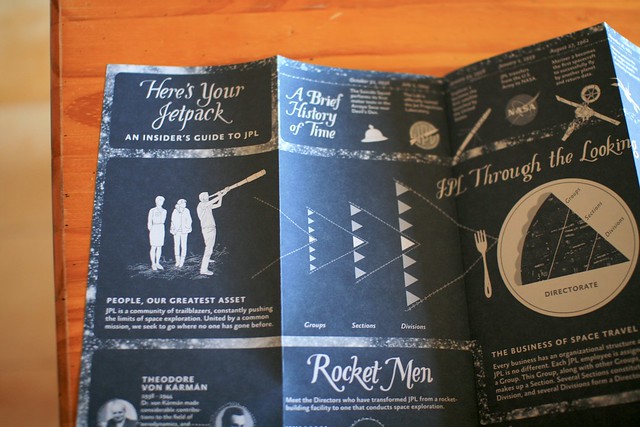

As described by Luke:
“For a place that depends on logic and reason, the Lab’s layout is anything but. In fact, a running joke at JPL is that its employees need to use GPS to find their way around the Lab. For one, buildings have numbers instead of names. Secondly, buildings are ordered in the number in which they were funded, instead of by location. For example, Building 67 is perplexingly located between Buildings 238 and 138.
Intrigued by this dichotomy and wanting to know more about JPL aside from the four walls of my cubicle, I came up with a plan. Armed with a GPS tracking device, camera, and a trusty pair of shoes, I walked to every building on Lab in numerical order. What I thought would take a Saturday afternoon took 22 hours over the span of four days at a walking distance of 52.2 miles.
The resulting map is a reflection of this wacky experiment, research at the Lab’s Beacon Library, and conversations with other JPL employees. The map itself is divided into two sections. The front is an Insider’s Guide to JPL, containing information I wish someone had explained to me when I began working at the Lab.“
Why do I blog this? Having been to CERN yesterday morning with the Lift12 speakers made me realize how such maps of big research facilities can be relevant as a way to not only describe spatial material but also stories and cultural content related to these intriguing places. Quite a nice project!
Week Quotes: 19022012
Heard around Calabasas
compiled by Luke Johnson
Weekending 18022012
This week was quite active with Nicolas visiting the laboratory in Los Angeles. The main reason for this was a workshop about locative media for Nokia Advanced Design team in Calabasas. Two days there with good discussions about current projects related to this field of application. This visit was also the occasion to give a talk about his approaches and methodologies over lunch.
Nicolas’ presence in California was also the occasion to move forward on “Convenience”: a project we (Julian, Nicolas, Nick Foster and Rhys Newman) are working on about the main objects you find in kiosks and convenience stores. The stuff you find at the check-out of your local news stand/kiosk/liquor store can be seen as representing the evolutionary curve of all fantastical things. At a certain point of time they were innovative and now they wind up as 99¢ a pop, or 3 for a $1, &c. Verifiable or not, this is a curious perspective on the evolution of things from magical rocket science to banal disposable crap.
Based on this observation, we’re doing a bit of a history of those things from *today* and printing them in a Newspaper Club newspaper. The idea was to start from a limited list of items (from AA batteries to condoms, from Bic pens to lighters), have lovely little drawing of the things, a short description of each as well as a short text about their implications for the history of innovations. This material will be used very soon in a workshop about design fiction meant to focus on the future products one can find in convenience store.
After a quick hop over North America and the Atlantic ocean, Nicolas also spent the two last days of the week on a workshop at HEAD-Geneva with Etienne Mineur and Daniel Sciboz about pervasive games. The idea was to move forward with the game concepts that has been previously prepared two months ago. These games will be presented in an upcoming exhibit at Maison d’Ailleurs (the Swiss Museum of Science-Fiction) called “Playtime. And yes, this is exactly the same venue where the game controllers’ collection is going to be shown too.
While Nicolas was flying over the Atlantic, Rhys drove and Julian and his brother Marcus flew to the desert — Oracle, Arizona to be precise. Rhys and his 18milesperhour partner Brian road an endurance race — 24 hours in the Old Pueblo. Julian took the opportunity to stay up for 36 hours and photo document the conclusion of each lap of a couple dozen of the 24 hour solo riders, of which Rhys and Brian were two of 50-some Men’s Solo and 7 Women’s Solo cyclist.
In the meantime, Fabien was left alone in Europe to contemplate the results of produced by Interactive Things from our analysis of the mobile phone network activity in Geneva. The visualizations compiled in the Ville Vivante web site are now part also part of the streetscape of the city. This week, Nicolas will lead at Lift a co-creation workshop on the implications of this kind of materialization of network data.
Fabien also gave a class on the same matter with engineers, designers and journalist who follow a postgraduate course on Information Visualization at IDEC.
Some interfaces encountered in Los Angeles this week
Few examples of technology/software-enabled spatiality encountered in Los Angeles last week:
First, this marvelous dashboard from a Toyota Prius, an energy monitor that dynamically gives indications to the driver. As soon as I got into the taxi, I became fascinated by this visualization, it looks like a weird video-game (especially if you consider the joystick-shaped gear selector that has no real mechanical link to the car).
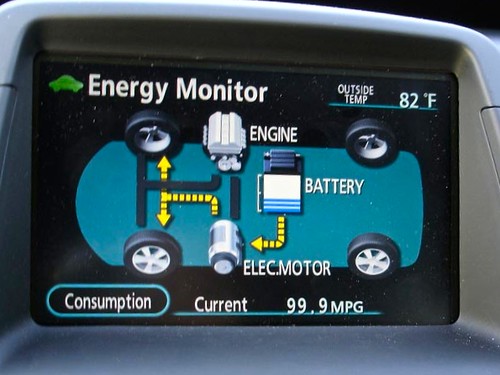
Then this Google map itinerary printed on paper, definitely a classic nowadays:

This miniature keyboard seen at the flea market in Pasadena is also curious… sitting here in a previously human-inhabited kiosk:
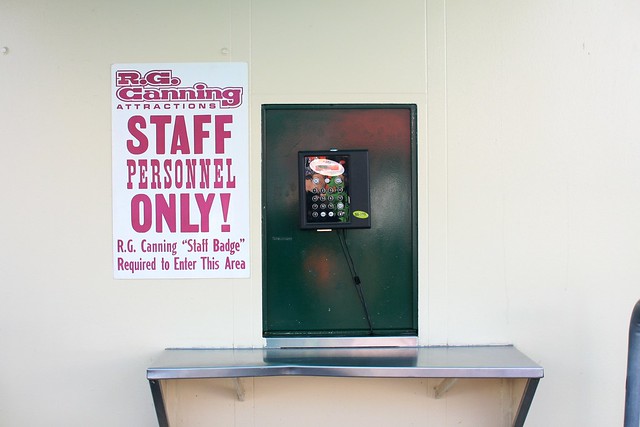
Being a great fan of pet toys, this mouse-controlled mouse is a definitely stunning invention. Not just because of the mouse recurrence, but also because designing artifacts for non-humans may be intriguing:

And finally, this gorgeous “singing rock” that we ran across in Calabasas is one of those little things that express the seemingly human need to control nature:
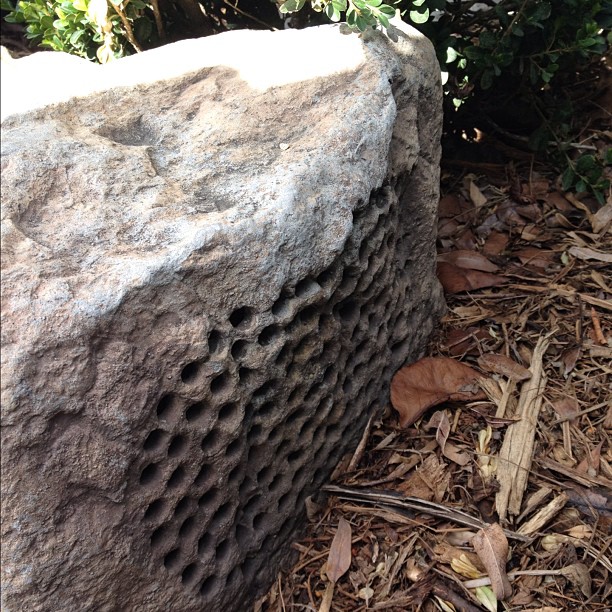
Why do I blog this? Of course there are plenty of other objects, but these different “interfaces” struck me as fascinating this time in California. Mostly because they have various spatial implications and that they’re all somewhat recent.
Links for 2012-02-14 [del.icio.us]
- Gesture Controlled Ambient Phone Display
- KD01k: Sun Tzu's «The Art of War» generative re-interpretation
generative re-interpretation based on statistical analysis of the ponctuation
Links for 2012-02-13 [del.icio.us]
- Listening In: Practices Surrounding iTunes Music Sharing
"This paper presents a descriptive account of the social practices surrounding the iTunes music sharing of 13 participants in one organizational setting. Specifically, we characterize adoption, critical mass, and privacy; impression management and access control; the musical impressions of others that are created as a result of music sharing; the ways in which participants attempted to make sense of the dynamic system; and implications of the overlaid technical, musical, and corporate topologies. We interleave design implications throughout our results and relate those results to broader themes in a music sharing design space."
Weekending 12022012
This week in Barcelona started with the pleasure of having Quadrigram making the cut of the finalist of the Strata 2012 Startup Showcase. The tool is a couple of weeks away from seeing the light and the teaser video is now online. At Strata, I will present the tool with my friends at Bestiario right after my session on Sketching with Data.
On the invitation of Claro Partners to present the lab, I took the opportunity to present my experience working with network data, particularly focusing on the methods we employ to help innovate in the domain of ‘big’ data. Have a look at the slide deck: it starts with a reference to Napoléon Bonaparte ‘Un bon croquis vaut mieux qu’un long discours’, goes through the uses of sketches as part of any creative work exemplified by Le Corbusier, and concludes with Picasso and the art of sketching.
Okay. What else? In Los Angeles, we used a solder paste stencil for the first time. Impressed. Good stuff. Definitely worth $25-$50. You can tell in this video I haven’t used solder paste in awhile..I forgot to put the proper hot, hot air on so I’m basically just blowing balmy air on the board. More practice, again. I have to say, the stencil is definitely a time saver. Although, I’m still going to get a big-ass pick ‘n place machine cause that’d make it even faster to get boards done. ((That’s EarFreshener up in that video, by the way.))

Nicolas came to town on Saturday and Sunday we went to the crazy flea market at the Pasadena Coliseum, home of the Rose Bowl. We found weird things and Nicolas found a fantastic mint-condition Polaroid in its crushed red velvet case. Lucky old salt. Prior to that, his week was focused on both phone call with Lift12 speakers and the final presentation for the head-mounted display project, which went fairly well. Results from this field study are kind of secrets so far but there will eventually be a publication about that.
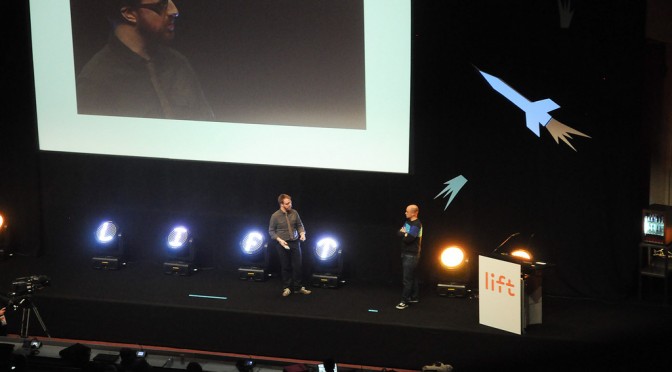
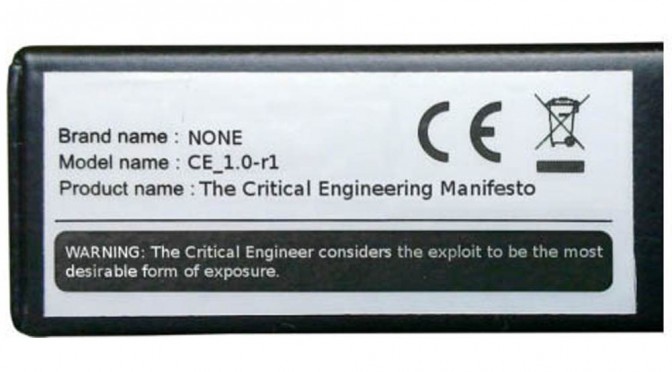

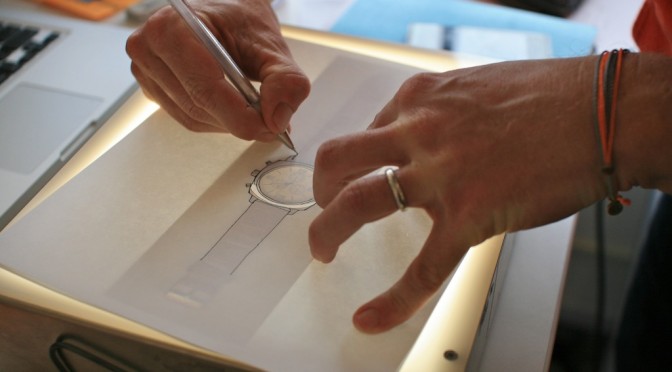

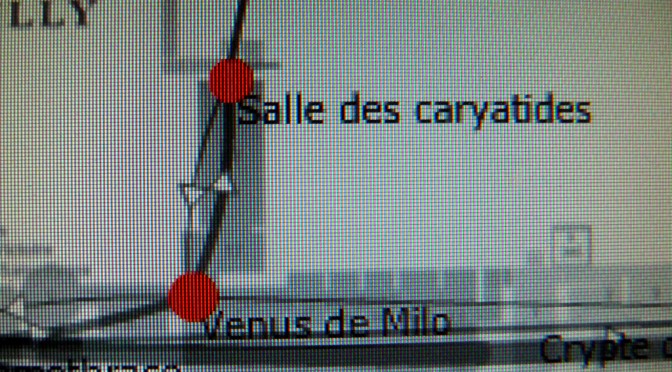
* He’ll be here as a bit of a sanity check.
* It turns out business people want sex just a much as anyone else. That’s why they go to conferences.
* There is a feature called the hot babe alert.
* It’s the kind of place that sells knock-off Haines underwear.
* The ability to lie is important socially.
* This a bicycling studio not a golf studio.
* Child-proof has become adult-proof.
– Valentine’s Day is manufactured by Hallmark anyway.
– We should have bought them.
* It’s hard to celebrate (Valentine’s Day) when you have three kids and a sister-in-law in town with a six-month old.
* There are winners and losers in traffic control.*
((Heard during a studio field trip to ATSAC, the Los Angeles Traffic Control Center))
* It’s like World War II coffee, if you’re in the trenches it’s OK.
* We won’t be able to wordsmith our way through this one.
* It mounts on things, not people.
* All design projects are fragile by nature.
* It’s going to be a Ramen (noodle) month.
music played
Living the Vida Loca by Ricky Martin
Plus Rien Ne M’Etonne by Tiken Jah Fakoly
books recommended
The Perfect Thing: How the iPod Shuffles, Commerce, Culture, and Coolness by Steven Levy